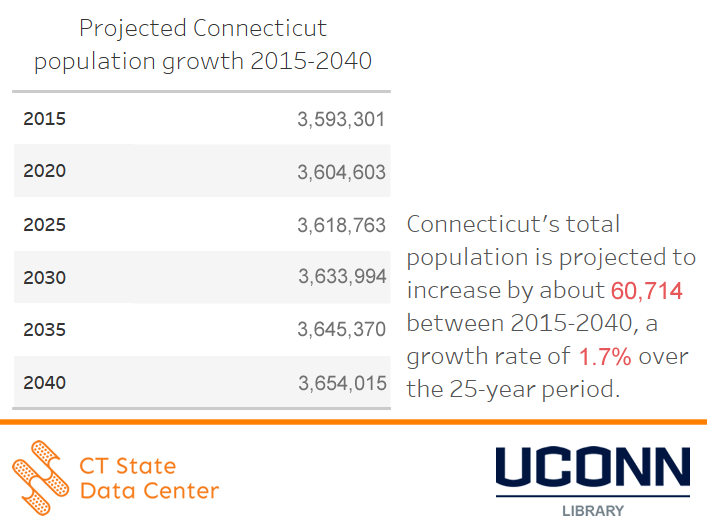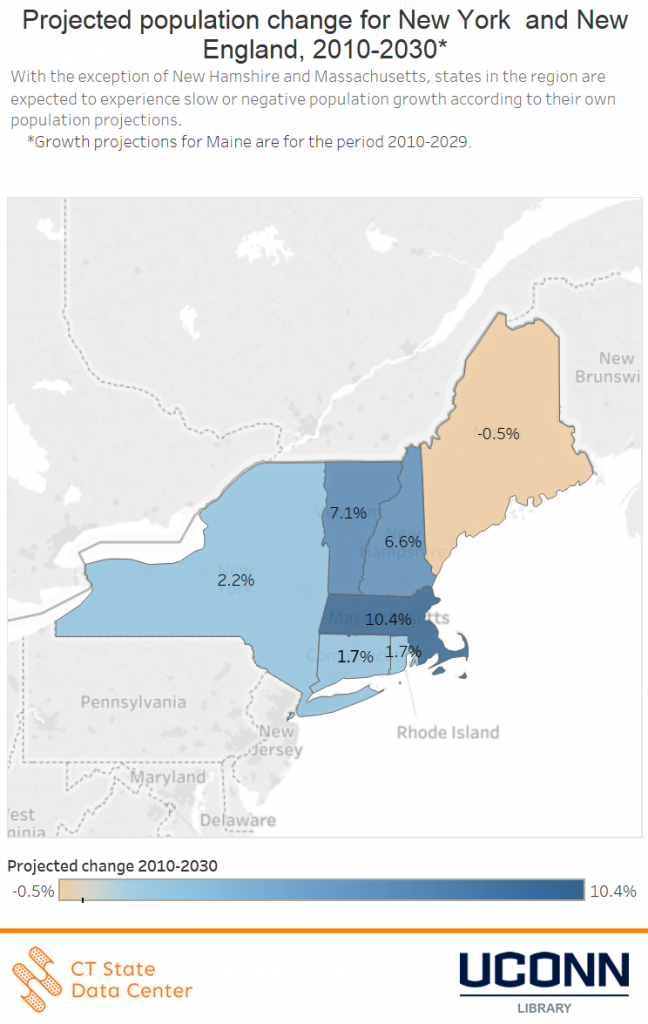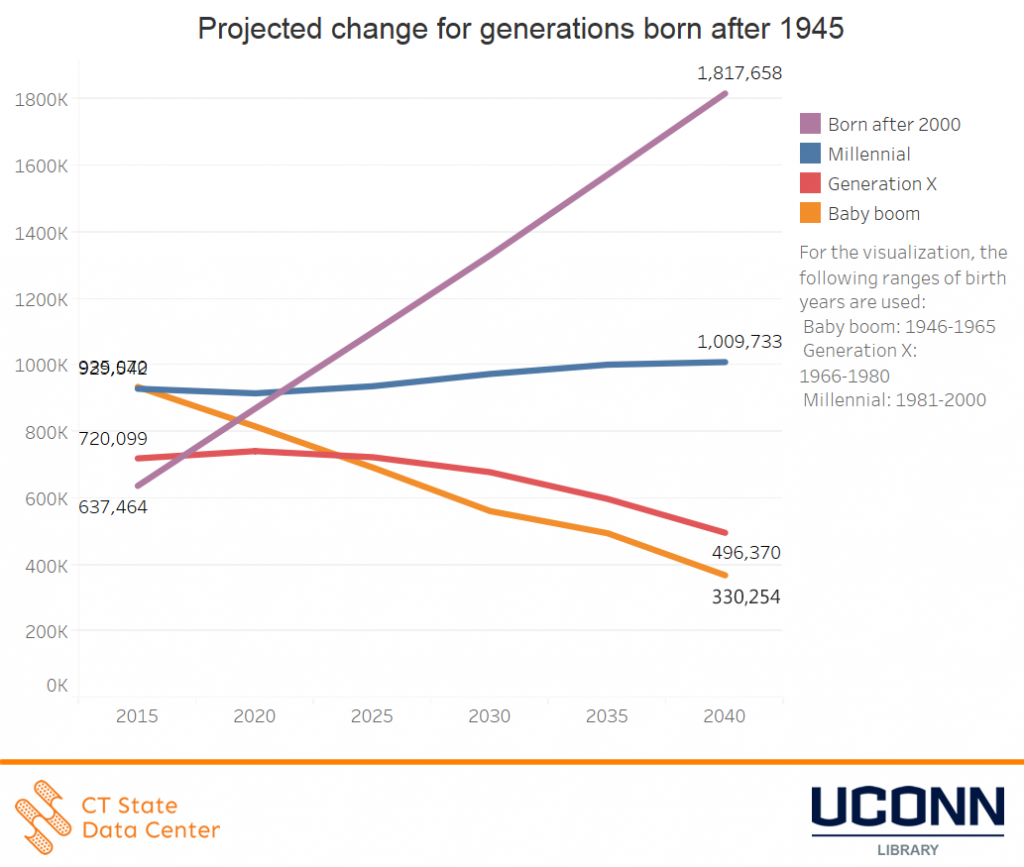For Immediate Release: Monday July 31, 2017
(Revised September 19, 2017)
Connecticut’s Population is Expected to Grow Slowly, Connecticut State Data Center Reports
July 31, 2017 – The state of Connecticut is expected to add about 60,700 residents from 2015 to 2040, according to the 2015 to 20140 population projections for the state of Connecticut, released today by the Connecticut State Data Center.
The new projections, based on the age characteristics of the states population along with recent birth, death, and migration rates, indicate that the states resident population is expected to grow from about 3.59 million in 2015 to approximately 3.65 million in 2040, a 1.7% growth rate over the 25-year period.

| Figure 1: 2015 to 2040 Population Projections for the State of Connecticut |
The slow projected growth mirrors that of states in the region, with most states in New England predicting small gains in population, or even negative growth, in the foreseeable future.
From 2010 to 2030, Connecticut is projected to gain 1.7%, Maine is projected to lose 0.5%, Massachusetts is projected to gain 10.4%, New Hampshire is projected to gain 6.6%, New York is projected to gain 2.2%, Rhode Island is projected to gain 1.7%, and Vermont is projected to gain 7.1% in population, according to projections produced by each of the respective states.

| Figure 2: Projected Population Change for New York and New England, 2010 – 2030* |
A main factor driving low projected growth are regional trends in fertility rates, the number of births per 1,000 women of childbearing age. New England states fertility rates trailed those of all other states in 2015, according to the latest data from U.S. Health and Human Services. Connecticut’s fertility rate of 52.5 was the 5th lowest in the country, slightly greater than rates in Rhode Island, Massachusetts, New Hampshire and Vermont, which ranked last.
As the baby boomer generation ages, a generational shift is projected to occur in Connecticut as the Millennials (individuals born 1981-2000) remain a nearly stable population in Connecticut while the population born after 2000 is projected to continue to rise from 637,000+ in 2015 to a projected 1.8 million by 2040.
| Figure 3: Projected Change for Generations Born after 1945 |
“Land of steady habits” summarizes the overall recent trends of birth, mortality, and migration rates, trends which are held constant in the projection models. Migration – both domestic and international – also contributes to changes in Connecticut’s projected population. With recent years seeing Connecticut’s population change nearing a net zero, when compared to birth, mortality, and international migration, it is important to look at the entire picture of data to see that Connecticut continues to experience growth.
With a projected 1.7% growth rate projected from 2015 to 2040, this rate can be influenced by a number of factors ranging from changes in domestic and international policy related to migration, to changes in fertility rates.
| Figure 3: Projected Change in Population for Generations Born After 1945 |
The population projections included in this release are based solely on demographic trends, and do not attempt to predict or account for future changes in economic, employment, or housing factors in the state.
For more details on the data release and how to view and access data, visit the Connecticut State Data Center 2015 to 2040 Population Projections site.
Note: This Press Release was updated on September 19, 2017 to correct an error in the data that was published on July 31, 2017.

